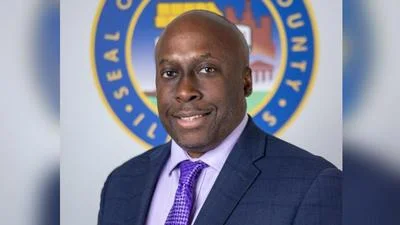Glencoe Park District issued the following announcement on July 15.
After the deadliest year on the Great Lakes, the Glencoe Park District launched Beach S.A.F.E. (Sailing & Aquatics for Everyone) on July 15 to introduce water safety in a fun and informative way.
“Seventeen people have drowned in Lake Michigan this year and 775 Great Lakes drownings have occurred since 2010. As a public beach, it is our responsibility to provide the Chicagoland community with resources to reduce risks on Lake Michigan,” said Matt Walker, Glencoe Beach Facility Manager.
“A large number of children in the Chicagoland community never learn basic water safety skills nor have the opportunity to enjoy on-water recreational activities. We designed Beach S.A.F.E. as an outreach program for vulnerable populations to learn safety skills and experience Lake Michigan recreation activities, as well as do our part to reduce drownings,” said Walker.
Beach S.A.F.E. is a public/private partnership co-sponsored by the Glencoe Park District and Glencoe Rotary. In 2019, the program will teach kids from three non-profit/municipal organizations: Waukegan Park District, Union Boys and Girls Club of Chicago, and Marillac Social Center. A Glencoe Rotary partnership provided financial support to help reduce access barriers by providing free transportation/lunch, protective swim shirts, water safety instruction, plus active recreation time to swim, sail, kayak, or paddleboard.
To kick-off Beach S.A.F.E., Dave Benjamin, Executive Director of the Great Lakes Surf Rescue Project (GLSRP), shared his 2010 Lake Michigan near-drowning incident and introduced the basics of water safety to participants.
Benjamin began the presentation with an informal survey, which typically reveals about 90% of kids say they know how to swim. But, he added, less than 5% know a drowning survival strategy such as “Flip, Float and Follow” when caught in a current or floating on your back and breathing deeply for added buoyancy.
“Knowing how to swim reduces your fear of water. But people often overestimate their swimming ability,” Benjamin said. “Males overestimate it by about 50 percent.”
Benjamin said a Red Cross report showed 54 percent of Americans who say they can swim don’t have basic swimming ability to survive a water emergency. The criteria for survival included five points: 1) resurfacing after falling into water over your head, 2) treading water for one minute, 3) spinning 360 degrees to spot an exit, 4) swimming 25 yards or length of the pool to get to that exit, and 5) climbing out of water without assistance.
“We want people to know how to swim but we want them also to understand their true swimming ability and that there’s a distinction between knowing how to swim and knowing how to survive,” he said. Most people can run but that doesn’t mean they have the ability to run a marathon, he added.
Drowning is one of the leading causes of accidental death, particularly for children and particularly for males, in the nation and the world, he said. Eighty percent of drowning victims are male, he said.
According to the Centers for Disease Control, one in five people who die from drowning in the United States are children age 14 and younger. In addition, the CDC states, for every child who dies from drowning, another five receive emergency department care for nonfatal submersion injuries.
After the presentation, Glencoe Beach staff brought kids to the lake to learn to kayak, paddleboard, or sail. “Our goal is to continue Beach S.A.F.E. by bringing safety presentations to more local organizations,” said Walker.
Original source can be found here.
Source: Glencoe Park District






 Alerts Sign-up
Alerts Sign-up